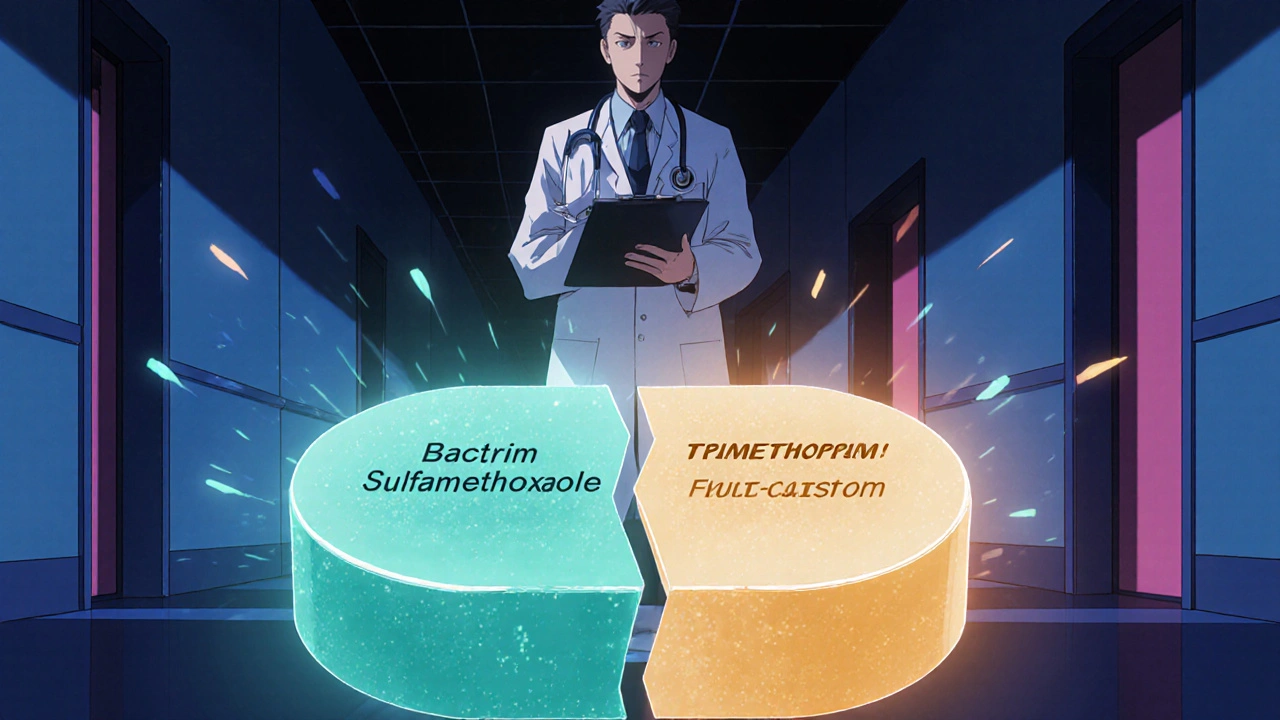Bactrim Side Effects: What You Need to Know About This Antibiotic
When you take Bactrim, a combination antibiotic made of sulfamethoxazole and trimethoprim, commonly prescribed for urinary tract infections, bronchitis, and traveler’s diarrhea. Also known as co-trimoxazole, it works by stopping bacteria from making folic acid—something your body needs to grow. But like all antibiotics, it doesn’t just target the bad bugs. It can mess with your gut, skin, and even your blood. Many people take Bactrim without issues, but others run into side effects that range from annoying to life-threatening.
The most common complaints are nausea, vomiting, and loss of appetite. These usually fade after a few days, but if they stick around, you might need to switch meds. A rash is also common—especially in people with HIV or those taking it for long periods. If the rash turns into blisters, peeling skin, or sores in your mouth, stop taking it immediately. That could be Stevens-Johnson syndrome, a rare but dangerous skin reaction linked to sulfa drugs like Bactrim. It’s rare, but it happens. You also need to watch for signs of low blood cell counts: unusual bruising, fever, sore throat, or feeling more tired than usual. Bactrim can lower your white blood cells, red blood cells, or platelets. Your doctor should check your blood if you’re on it for more than two weeks.
Some people get kidney problems, especially if they’re dehydrated or already have kidney disease. Drink plenty of water while taking Bactrim. You might also notice your urine turning darker—that’s normal. But if you stop peeing or feel pain when you do, call your doctor. Another risk? High potassium levels. That’s more likely if you’re older, have diabetes, or take blood pressure meds like ACE inhibitors. You might feel weak, have an irregular heartbeat, or get muscle cramps. These aren’t just side effects—they’re warning signs.
And here’s something most people don’t talk about: Bactrim can make your skin super sensitive to the sun. You can get a bad sunburn after just 10 minutes outside. Wear sunscreen, cover up, and avoid tanning beds. Also, don’t mix it with alcohol. It can cause flushing, rapid heartbeat, and nausea. If you’re on other meds—like blood thinners, seizure drugs, or diabetes pills—Bactrim can change how they work. Always tell your doctor what else you’re taking.
What you’ll find below isn’t just a list of side effects. It’s a real-world look at how people experience Bactrim, what went wrong, what worked, and what to watch out for. Some posts dive into how it compares to other antibiotics. Others show how to manage the nausea, the rashes, or the fatigue. You’ll see stories from people who had to stop it, and those who kept going safely. This isn’t theory. It’s what happens when real people take this drug—and what you need to know before you start.
Bactrim (Sulfamethoxazole/Trimethoprim) vs. Common Antibiotic Alternatives - Full Comparison Guide
A detailed guide comparing Bactrim (sulfamethoxazole/trimethoprim) with top antibiotic alternatives, covering uses, side effects, dosing, and how to pick the right option.
© 2025. All rights reserved.

